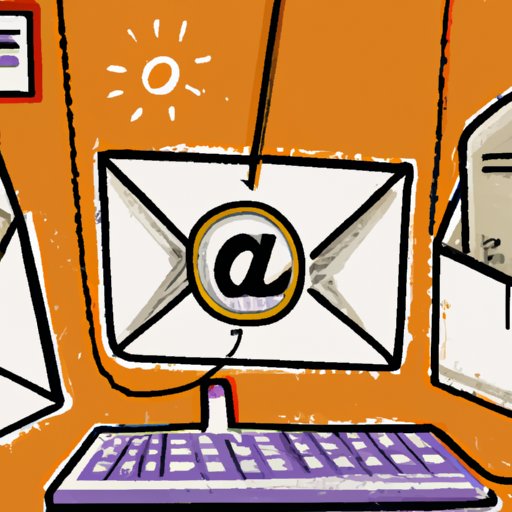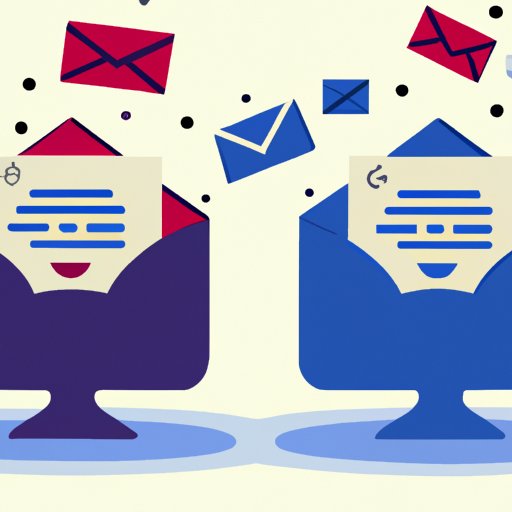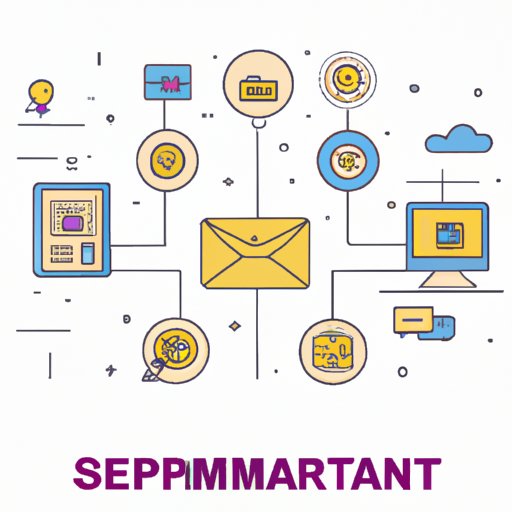Introduction
Email is an electronic messaging system that allows users to communicate with each other electronically. It is one of the most popular forms of communication and has revolutionized the way people communicate with each other. But when was the email invented? This article will explore the history of email and its origins, tracing back to when it was first used.
A Look into the History of Email: When Was It Invented?
Before email, there were early forms of electronic messaging such as telegrams and faxes. However, these methods of communication were expensive and time-consuming. In 1969, the U.S. Department of Defense developed the Advanced Research Projects Agency Network (ARPANET). This was the first wide-area computer network, and it allowed computers to communicate with each other over long distances.
In 1972, Ray Tomlinson developed the first email program for ARPANET. He used the @ symbol to separate the username from the hostname, which is still used today. By 1978, the Simple Mail Transfer Protocol (SMTP) was developed, which allowed emails to be sent between different networks. This made email more accessible and allowed users to send messages to anyone in the world.
Exploring the Evolution of Email: When Was It First Used?
Email was first adopted by universities and research institutions in the 1970s. They used it as a way to share information and collaborate on projects. By the 1980s, email had become more widely available and businesses began to use it as a way to communicate with their customers. By the 1990s, email had become an essential tool for both personal and business communications.
Today, email is used by billions of people around the world. It is estimated that 269 billion emails are sent every day, and this number is expected to reach 321 billion by the year 2021. Email has become an integral part of our lives, and it is hard to imagine a world without it.

How Email Changed Communication Forever: Tracing Its Origin
Email has had a significant impact on both personal and business communications. It has allowed people to communicate faster and more efficiently than ever before. Emails can be sent instantly and can be read anywhere in the world. This has enabled people to stay connected no matter where they are.
It has also improved collaboration between people. Teams can now work together more easily and efficiently. Documents can be shared quickly and easily, and ideas can be discussed in real-time. This has allowed teams to work together more effectively and get more done.
Finally, email has increased accessibility to information. Users can access emails from any device and at any time. This has made it easier for people to stay up-to-date with news and events, and to stay connected with friends and family.
The Invention of Email: A Timeline of Events
1971 – ALOHAnet Develops Mailing System: The ALOHAnet was the first wide-area computer network. It was developed at the University of Hawaii and allowed computers to communicate with each other over long distances. The ALOHAnet also developed a mailing system, which would later become the basis for email.
1972 – Ray Tomlinson Develops Email Program: Ray Tomlinson developed the first email program for ARPANET. He used the @ symbol to separate the username from the hostname, which is still used today. His program allowed users to send messages to each other over long distances.
1979 – UUCP Develops Network Email: The UUCP (Unix-to-Unix Copy Program) was developed in 1979. This protocol allowed emails to be sent between different networks. This made email more accessible and allowed users to send messages to anyone in the world.

How Email Revolutionized Communication: Discovering Its Origins
Email has revolutionized the way we communicate with each other. It has allowed us to communicate faster, more efficiently, and more effectively. It has improved collaboration between people and has increased accessibility to information. Here are some of the ways email has changed communication:
- Faster Communication Through Email: Emails can be sent instantly and can be read anywhere in the world. This has enabled people to stay connected no matter where they are.
- Improved Collaboration Between People: Teams can now work together more easily and efficiently. Documents can be shared quickly and easily, and ideas can be discussed in real-time.
- Increased Accessibility to Information: Users can access emails from any device and at any time. This has made it easier for people to stay up-to-date with news and events, and to stay connected with friends and family.
Conclusion
Email has been around for decades, and its evolution has changed the way we communicate with each other. From its invention in 1971 to its expansion in the 1980s, email has revolutionized communication. It has allowed us to communicate faster, more efficiently, and more effectively. It has improved collaboration between people and has increased accessibility to information. Email is an essential tool for both personal and business communications, and it is hard to imagine a world without it.
In conclusion, email has had a profound impact on society. It has changed the way we communicate and collaborate with each other, and it has made it easier for us to stay connected no matter where we are. Email is an essential tool for communication, and it is here to stay.
(Note: Is this article not meeting your expectations? Do you have knowledge or insights to share? Unlock new opportunities and expand your reach by joining our authors team. Click Registration to join us and share your expertise with our readers.)
